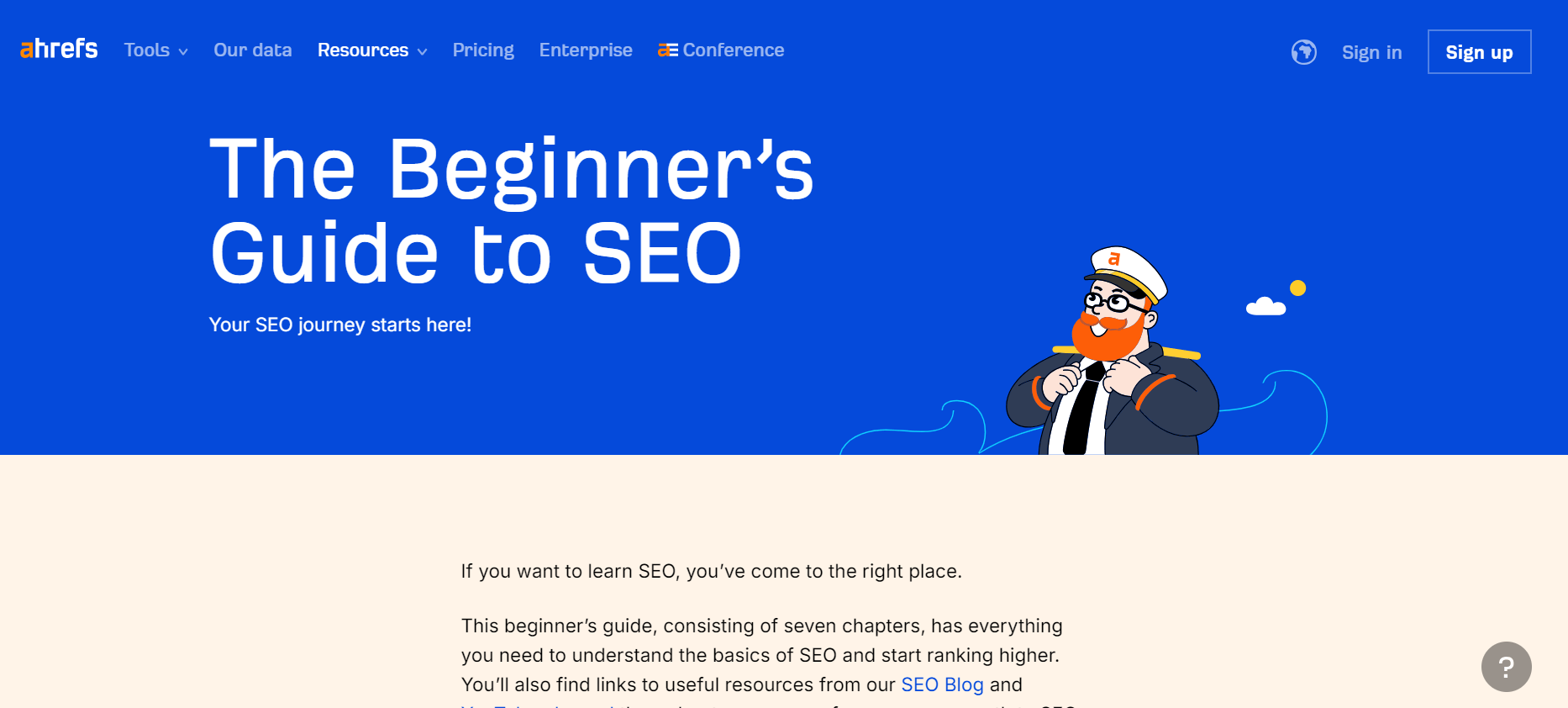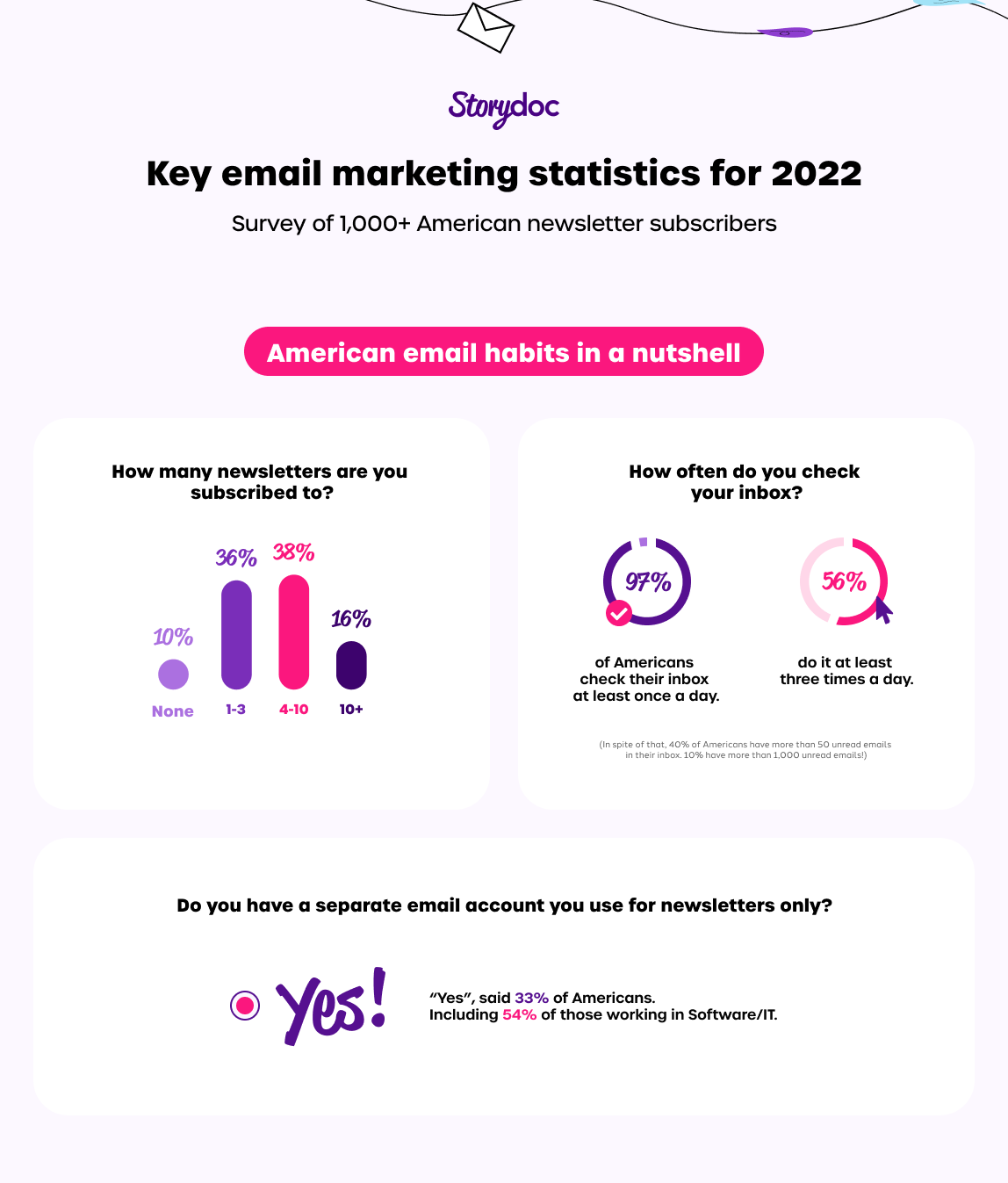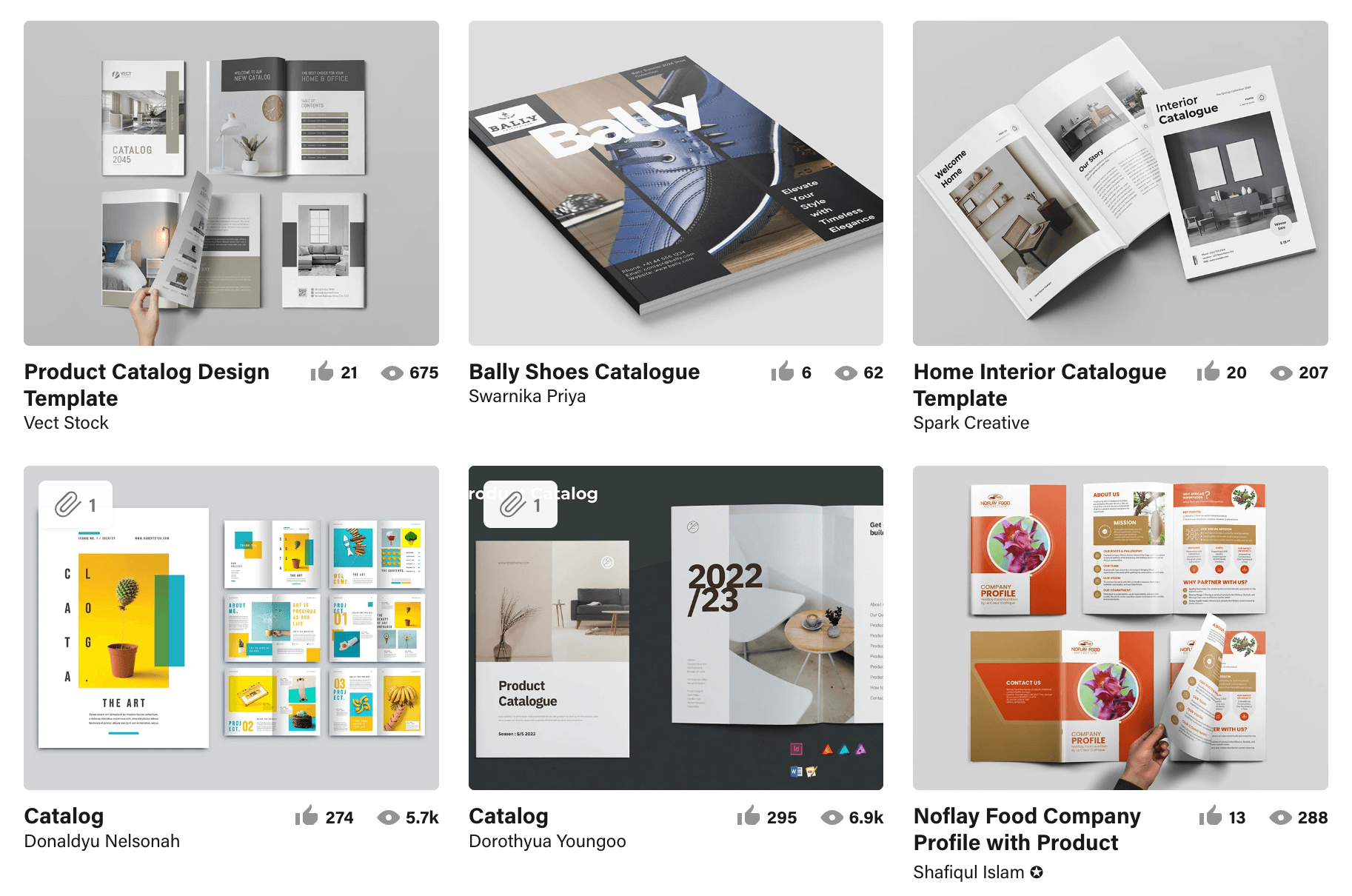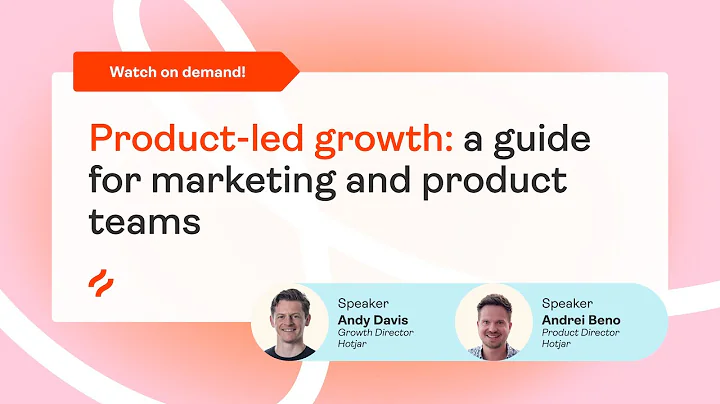B2B Marketing Collateral Types That Drive Growth (+Examples)
Find out what are the most important types of marketing collateral, when and how to use each type, and how to make them support and drive sales.


Find out what are the most important types of marketing collateral, when and how to use each type, and how to make them support and drive sales.
Marketing collateral is a collection of digital or printed creative assets including text, infographics, videos, and art that support a brand’s marketing efforts. Marketing collateral helps promote the company, its products, and its services.
Marketing collateral is intended to educate prospects about the key features, benefits, and value of a product or service, build brand awareness, and generate leads.
| Awareness stage | |
|---|---|
| Collateral type | How to use it |
| Logos | Represent your brand visually and create a memorable image for your company. |
| Business cards | Provide contact information and represent your brand in a professional and accessible manner. |
| Social media posts | Create awareness of the brand and its offerings, engage with the target audience, and drive traffic to the website. |
| Blog posts | Provide educational and informative content to attract visitors to your website and raise brand awareness. |
| Pillar pages | Provide in-depth information on specific topics related to your product or service to attract visitors and establish your expertise. |
| Infographics | Visualize complex data or information to make it more engaging and easier to understand for your audience, helping to capture the attention of the target audience and build interest in the brand. |
| Online ads and banners | Advertise your products or services to a large audience through online platforms, such as Google Ads or social media. |
| Newsletters | Provide educational and informative content to attract visitors to your website, raise brand awareness, and build relationships with the prospects. |
| Explainer videos | Quickly and effectively communicate the key features and benefits of the products or services in an engaging and memorable way. Create an initial impression and build a foundation for the sales process. |
| Lead magnets | Offer valuable content in exchange for contact information to generate leads and build your email list. |
| Podcasts | Produce audio content that discusses topics relevant to your target audience to reach a wider and more engaged audience. |
| Digital corporate magazines | Introduce the brand and its offerings, educate the target audience about the products or services, and build relationships with the prospects. By providing regular, relevant, and valuable content, digital corporate magazines can help to establish the brand as a thought leader. |
| Consideration stage | |
|---|---|
| Collateral type | How to use it |
| Brochures | Provide more detailed information about the products or services to differentiate the brand from its competitors, and to support the purchasing decision. |
| Product catalogs and portfolios | Provide the information needed to make an informed purchasing decision in a visually appealing and organized manner. |
| E-books | Offer a comprehensive guide or resource on a specific topic to demonstrate your expertise and build trust with prospects. |
| White papers | Present in-depth research and analysis on a specific issue to position your company as a thought leader in the industry. |
| Reports | Present data and insights on industry trends, market research, or company performance to position your brand as an expert. |
| Webinars | Host interactive online events to educate prospects, build relationships, and move them closer to a purchase decision. |
| Action stage | |
|---|---|
| Collateral type | How to use it |
| Landing pages | Create specific pages with a clear call-to-action to convert visitors into customers or leads. |
| Case studies and testimonials | Show real-life examples of how your product or service has helped your customers to build trust and credibility with prospects. |
Advantages
Disadvantages
How to create
Luckily, there are plenty of logo creation tools out there.
Here's a list of the best logo designer software, including both free and paid options, as well as creative logo designs to inspire your own!
Advantages
Business cards are a tangible reminder of who you are and what you do.
They are a great way to make a lasting impression and build relationships with potential clients and customers.
They are cost-effective, especially if you design them in-house or print them in bulk.
They are easy to carry around, always ready for a networking opportunity.
Disadvantages
Business cards are easily misplaced or forgotten
They can be perceived as old-fashioned
They can be easily replicated by others
They can be ignored if not designed and presented in an attractive way
Business cards' effectiveness can not be measured, so you can't know for sure how well your cards are working for you
How to create
Creating a business card is very simple. The main task is picking the right tool; once you've got that, you just pop in your information and pick a design that really speaks to you.
If you decide to make use of this marketing collateral type, here’s a useful article rounding up the best free online business card makers.
Advantages
Landing pages are excellent for collecting contact info and building your customer base.
They're effective for driving visitors toward a specific action, like signing up or making a purchase (the example landing page above, built with Storydoc, has a 72% conversion rate from visitor to user).
Disadvantages
If the content isn’t relevant or engaging enough, visitors might leave quickly.
They need regular updates and testing to ensure they're optimized for conversions.
How to create
Best tools to create a high-converting landing page:
Landing page builders, such as Storydoc, Landingi, Unbounce, or Wix
A/B testing tools like Optimizely or VWO
Analytics tools such as Google Analytics or Hotjar
Sales landing page templates to set up your page design in minutes.
For more in-depth information, read these articles:
How to measure
Key metrics for measuring the success of your landing page:
Conversion rate
Bounce rate
Cost per acquisition
Click heatmap
Mouse cursor movements
Scroll depth
Video views
Advantages
Social media lets you tap into a massive global audience, significantly broadening your reach.
Most social media marketing can be done at a low cost, offering a budget-friendly alternative to traditional advertising.
These platforms offer direct ways to interact with customers, boosting brand loyalty and improving customer service.
Ads can be customized to target specific groups based on demographics, interests, and behaviors, making them highly effective.
Disadvantages
Managing social media effectively involves a lot of time crafting posts, engaging with followers, and staying on top of trends.
The ever-changing algorithms of social media platforms make it difficult to predict the reach and engagement of your posts.
Open communication means there's always a risk of negative comments or reviews, which can quickly affect your brand’s image.
Although there are tools to help track performance, determining the real impact on sales and overall ROI can be tricky.
How to create
Top tools to aid your social media strategy:
For more tips on how to get started, including what metrics to track and a free template, check out Hootsuite’s guide on how to create a social media strategy in 9 easy steps.
Advantages
Blog posts are cheap to make and easy to share, and they can bring in a lot of bang for your buck.
When optimized correctly, they can help boost your website's visibility and bring in more visitors naturally.
Blogs can deliver substantial returns on investment by attracting new visitors and converting them into customers.
Blog posts provide a platform for deep dives into topics, helping engage readers and encourage interactions through comments and shares.
Disadvantages
The effectiveness of a blog heavily relies on the quality of the content. Poorly written or irrelevant posts won't attract readers or help your SEO efforts.
Writing quality content that engages and informs requires considerable time and effort.
It often takes a long time to see the benefits from blogging, but combine blog posts with keyword and SEO optimization along with link building strategies and I promise you, it'll be worth it in the end.
Blogs demand regular updates and maintenance to keep the content fresh and relevant, which can be a challenge.
How to create
Content management platforms for blogging:
Writing and editing tools:
AI content and humanizer tools:
ChatGPT
Claude
How to measure
Metrics for tracking blog post performance:
Users
Page views
Time on page
Bounce rate
Conversion rate
Scroll depth
Google SERP keyword positions
Advantages
They showcase your expertise and authority.
They increase visibility and credibility for your brand.
They improve your internal link profile and help you rank in Google SERP.
Disadvantages
Creating a high-quality pillar page requires a lot of time and resources. It involves thorough research and planning to ensure the content is comprehensive, well-organized, and engaging for the target audience.
How to create
Best tools for creating a high-quality pillar page:
SEO tools like SEMrush or Ahrefs will help you optimize your pillar page for search engines.
If you need more information, here’s a 10-step framework for building a pillar page.
How to measure
Main metrics for measuring the effectiveness of a pillar page:
Users
Page view (for secondary sub-topic pages too)
Time on page
Bounce rate
Conversion rate
Scroll depth
Google SERP keyword positio
Advantages
Infographics make complex information easy to understand.
They can increase engagement and retention of information.
Infographics can improve brand awareness.
Infographics are highly share-worthy and can get you placements on other websites.
Disadvantages
Infographics can easily go wrong and mix "pretty" or "cool" with "easy to understand".
If the data isn't properly sourced, the infographic can be filled with inaccuracies.
If too much information is packed into one design, it can overwhelm the audience.
How to create
Best tools to create infographics:
Piktochart - has a wide variety of templates, icons and charts to choose from, this tool makes it easy to create infographics.
Venngage - has a wide range of customization options, Venngage allows you to create infographics that are unique and tailored to your brand.
To get you started, here are some of the best infographic templates to stun your audience that you can instantly download and customize to your needs.
How to measure
Key metrics for measuring the success of an infographic include:
Views
Shares
Likes
Image views
Advantages
Brochures are an easy way to give prospects a quick overview of what you offer that they can take with them.
Brochures can create a strong first impression.
Brochures are beautiful and with digital brochures, you can add interactive elements, videos, and even links to landing pages.
Disadvantages
Brochures can be costly to produce.
Paper brochures are limited in quantity and require printing more when depleted.
Brochures are commonly tossed into the trash as soon as they are (politely) accepted. But this is not an issue with digital brochures that require a person to intentionally scan a QR code or open a link.
How to create
Tools to create brochures:
Microsoft Publisher - Lets you create static PDF brochures.
Adobe InDesign - Lets you create interactive or PDF brochures (requires expertise).
Storydoc brochure maker - Lets you easily create interactive brochures with AI and a drag-and-drop interface.
How to measure
Printed brochures like all printed marketing collateral can not be effectively measured.
Key metrics to track digital brochures:
Users (from a link or QR code)
Leads
Bounce rate
Reading time
Viewed slides
CTA clicks
Form submissions
Shares
*You can get all this information with Storydoc's built-in brochure analytics.
Advantages
They're perfect for reaching a wide audience quickly and easily.
They're highly customizable and can be tailored to target specific demographics.
You can easily make changes or adjustments to your ads in real-time.
Disadvantages
They can be subject to banner blindness - as online ads are often seen as intrusive, they can be deliberately or unconsciously ignored or overlooked by users.
They can be costly if not optimized correctly.
They can be subject to fraud and bots, which can skew performance metrics.
More than a quarter of all Internet users in the US alone use ad blockers, so they might not get seen at all.
How to create
If you’d like to get started with online advertising, here’s the official Facebook guide that will help you set up your first ad in a matter of minutes. For banners, you can start by playing around with Canva’s free online banner maker. Good luck!
How to measure
Here are some of the most important online ad and banner metrics:
Impressions: This metric measures the number of times your ad has been displayed. It tells you how much visibility and attention your ad is getting.
Click-through rate (CTR): This metric measures the number of clicks your ad receives divided by the number of times it's been displayed. In other words, it tells you how often people are clicking on your ad.
Cost-per-click (CPC): This metric measures the cost of each click on your ad. It's a great way to see if your ad spend is delivering a good return on investment.
Conversion rate: This metric measures the number of people who take a desired action (like making a purchase or signing up for a newsletter) after clicking on your ad.
Bounce rate: This metric measures the number of people who leave your website after only viewing one page. A high bounce rate could indicate that your ad is not relevant or interesting to the user.
Return on Ad Spend (ROAS): This metric measures the overall return on investment of your ad spend. It’s calculated by dividing the revenue generated by the ad spend.
Advantages
Newsletters go straight to the inbox of your subscribers, ensuring your message reaches them directly.
Regular updates help maintain and strengthen relationships with your audience, keeping your brand top-of-mind.
Content, design, and frequency can all be tailored to meet the specific interests and needs of your audience.
Disadvantages
If you mess any of the elements up, you don’t get a do-over once your email is out into the world.
With so many companies sending newsletters, it's easy for yours to get lost in an overcrowded inbox.
To be effective, newsletters need to be sent on a regular schedule, which can be a strain on resources.
Creating interesting newsletters on a regular basis can be very time consuming.
Avoid spam filters can be technically challenging.
How to create
Main steps for creating a newsletter:
First, you have to decide on the theme of your newsletter - do you want to promote a new product or service, share industry news or updates, or simply provide valuable information to your audience?
Then, you need to think about the guest list, or, your target audience - will you send it out to all contacts or chosen segments?
Once that's settled, it's time to start crafting the invitation, meaning the perfect subject line to grab your audience's attention.
Next up is the menu, aka the content of your newsletter. You want to make sure you have a mix of appetizers (short snippets of information), entrees (valuable content), and dessert (calls-to-action) to keep your audience engaged.
And of course, no party is complete without decorations, or in this case, design elements, to make your newsletter visually appealing.
Finally, it's time to send out the invitations and see who RSVPs (open and click-through rates) and who actually shows up (conversions).
Tools for creating and running a newsetter:
There are hundreds of email marketing tools to help you get the job done. But I’ve narrowed it down to the top 4:
Mailchimp is a natural option with its intuitive drag-and-drop editor, A/B testing feature, and AI-assisted suggestions.
HubSpot's email marketing tool is powered by your CRM data and makes your work much easier if you're using Hubspot as your CRM.
Sendinblue offers a variety of templates to choose from to build automated email flows.
Subtrack is a dedicated platform for individual writers to get get their message out, get shared, and get paying subscribers.
Advantages
They're great for existing customers who need a little extra help understanding your products or services, or making the most of its features.
They can be aimed at prospects who are still on the fence about making a purchase. Using explainer videos is a great way to overcome change resistance. Seeing just how easy your product or service is to navigate might just sway them in the right direction!
They're great for ncreasing awareness, especially in the initial stages of brand building.
Videos are highly engaging and can capture the attention of viewers more effectively than text or images alone.
Disadvantages
Producing a video from start to finish can be a lengthy process, from planning and scripting to editing and launching.
Creating high-quality videos often involves significant expense, including costs for scriptwriting, animation, and production.
Unlike text-based content, videos are not searchable without proper optimization, potentially limiting their organic reach.
How to create
Some popular options of video making tools include:
How to measure
Here are the top metrics to measure the success of your explainer videos:
If your goal is to increase website traffic, you'll want to track metrics such as website views, click-through rate (CTR), and bounce rate.
If your goal is to boost conversions, track metrics such as the number of conversions, conversion rate, and revenue generated to see how many people it's turning into paying customers.
If your goal is to improve brand awareness, think of your video as a brand ambassador. Track metrics such as brand recall, brand sentiment, and reach to see how well it's representing your company.
Advantages
They provide a comprehensive look at your products or services.
They can be used in a variety of business settings (trade shows, sales meetings, email marketing campaigns).
They make it easier for customers to make informed purchasing decisions, particularly in industries where images speak louder than words.
They can help businesses establish a professional image.
Disadvantages
They can become outdated quickly if your product line changes frequently.
If you have several product lines, you might want to consider creating separate portfolios to make sure they’re relevant to different target markets.
How to create
To get you started, here’s a handy article that will walk you through the process, including a bunch of templates for different use cases.
And as for portfolios, we’ve got you covered there too. Our guide will teach you how to create an online portfolio in 8 easy steps and leave you with some of the best examples out there to inspire your efforts!
Advantages
By collecting email addresses, lead magnets help grow your subscriber base, giving you a direct line to your audience.
They give you valuable information about potential customers which you can use to tailor your marketing campaigns and personalize the sales experience.
Providing high-quality, useful content can establish your brand as an authority in your field.
Disadvantages
Not all leads collected through lead magnets are of high quality; some may provide their information just to access the freebie, with no real interest in further engagement.
Creating valuable and appealing lead magnets requires significant time and resources, including research, design, and content creation.
To remain effective, lead magnets must be updated regularly to keep up with changing consumer interests and industry trends.
Advantages
E-books can be shared globally, reaching a wide audience without the limitations of physical distribution.
Once created, distributing e-books involves minimal costs compared to printed materials.
They can be used effectively as lead magnets, offering valuable content in exchange for user information.
Disadvantages
Creating a high-quality e-book requires a lot of effort, including in-depth content research, writing, and design.
If not marketed effectively, e-books can end up rarely downloaded or read, leading to low engagement.
How to create
If you’d like someone to walk you through the creation process, check out HubSpot’s article on how to create an e-book from scratch, featuring some ready e-book templates.
A great way about creating an e-book is that you don't need to have years of design experience under your belt to make it look visually appealing.
Tools like Adobe InDesign or Canva come with a variety of features such as templates, graphics, and interactive elements that can easily take your e-book from boring to beautiful.
But, the visual aspect aside, it’s crucial to track if your e-book is hitting the mark with your target audience.
How to measure
Best metrics to measure the success of your e-book:
The number of downloads
The number of leads generated
The conversion rate
Advantages
They’re a great way to give concrete examples of the value you can offer to potential customers.
You can build trust by showing real-life capabilities of your solution.
You can show potential customers that you understand their needs and have helped others in similar situations.
Disadvantages
Case studies can be a real pain to create. You’ve got to do your research to ensure the questions you’re asking are as relevant as possible, interview past customers, organize the findings, and write the actual case study.
Case studies can be hit and miss. Even if you’ve put in all the effort to create a great case study, it doesn’t guarantee that it’s going to be a hit with your target audience.
Case studies can be a bit of a snooze-fest. I mean, let’s be real here, most people don’t want to read a bunch of technical jargon. It’s like trying to watch a science documentary on ambien. You might learn something, but if it’s not engaging and easy to digest, you might also fall asleep.
How to create
When it comes to creating a killer business case study, there are plenty of tools at your disposal. Most businesses use editable PDF, MS Word, Google Docs, or Pages.
But, if you want to tell the story of your business and its successes in a way that sticks, you should look into interactive case studies instead.
If you want to see what interactive case studies can look like, check out Storydoc’s own case studies. We also have a handy guide on how to write a case study for business in 5 steps to help you in the process.
How to measure
Unfortunately, checking if your case study is hitting the mark is not always so straightforward. Here’s a great piece outlining how various content marketers measure the effectiveness of their case studies.
Advantages
White papers help position your brand as a thought leader by diving deep into industry issues or innovations.
Often, those who download white papers are looking for detailed information, indicating a higher level of interest and potential for quality leads.
They are particularly effective in B2B contexts, where detailed, data-driven content can influence decision-makers.
White papers can be repurposed into blog posts, articles, and presentations, multiplying their value across your marketing efforts.
Disadvantages
White papers require high skill to research and write which means that they tend to be extremely time-consuming and expensive to create.
The detailed and technical nature of white papers might limit their appeal to a broader audience, focusing mostly on industry specialists or professionals.
How to create
Creating a white paper can be a daunting task, but with the right tools, it doesn't have to be.
Check out these interactive white paper templates that you can easily replicate to create your own marketing collateral that goes way beyond any standard PDF or Word. There’s also a handy guide on how to write a white paper.
How to measure
Key metrics for white paper performance:
Time spent on page. If your audience is spending a lot of time reading and absorbing your white paper, it's a good sign that they're finding it valuable and interesting.
Leads. This metric can help you understand the ROI of your white paper and inform future content creation.
Conversion rate. It provides insight into how successful the document is at convincing readers to take a specific action, such as filling out a form or making a purchase. This information can then be used to improve future marketing efforts and increase overall return on investment.
Shares. This metric tells you how many people are sharing your white paper on social media or with their networks, like a virtual high-five for a job well done. The more shares you have, the more your white paper is resonating with your audience and the wider your reach becomes.
Advantages
Reports can position your company as a thought leader in your industry, making you the go-to source for industry insights and knowledge.
Reports build up credibility and earn your audience’s trust. Who doesn't love a company that is transparent and informative?
Reports are handy for PR purposes and can improve your company’s reputation. For example, by showing the positive effects of your work on the local community, you can gain people’s support and admiration.
Disadvantages
Creating reports is often time-consuming and requires a significant amount of resources, including expert data analysis and professional writing.
The depth and complexity of reports can be overwhelming for some readers, potentially leading to disengagement.
To remain relevant, reports may need to be updated frequently with new data, which can be a continual investment of time and effort.
How to create
Most companies create reports through a report design company. This tends to be very expensive and take a long time to finalize because of endless back and forth.
The best tool for designing reports on auto-pilot, saving time, and money is our own Storydoc report maker.
The result is interactive, engaging, and measurable.
How to measure
Metrics to consider when measuring your report's effectiveness:
Report downloads
Users/readers
Shares
Number of leads generated
Bounce rate
Reading time
Scroll depth
Viewed slides
CTA clicks
Advantages
One of the biggest benefits of using webinars as marketing collateral is the ability to reach a large audience in a short period of time without them having to leave their home or office.
The ability to reach out to a global audience as webinars can be recorded and played back at a later time which makes it accessible to people all around the world.
The ability to build trust and credibility with potential customers by providing valuable information and showcasing your expertise.
The ability to generate leads and sales by providing a platform for direct communication and promotion.
Disadvantages
Production costs can be high and production time tables can be long.
Getting a large enough viewership can be a major challenge for most companies.
Reliance on technology means you're at the mercy of Internet connections and software reliability, which can sometimes lead to disruptions.
Finding a time that works for all participants, especially with an international audience, can be difficult and might limit live attendance.
Maintaining the attention of an online audience can be tough, particularly if the webinar fails to capture and hold their interest throughout.
How to create
Once you're ready to take the stage with webinars in your marketing strategy, be sure to check out this guide on how to create engaging and effective webinars.
Tools to for making and recording a webinar:
Zoom is a popular choice for hosting live meetings and webinars. With its easy-to-use interface and a wide range of features, it's the ultimate choice for anyone looking to host a professional and engaging webinar.
LiveWebinar is a budget-friendly Zoom alternative that packs a punch. Create polls, surveys, and even host live Q&A sessions for a truly interactive experience.
BigMarker is a browser-based platform built for engagement. Keep your audience on the edge of their seats by interacting with them in real-time throughout the entire webinar.
How to measure
Want to make sure your webinar is a hit? Check out this fantastic article about the essential webinar metrics you should keep track of.
Advantages
The ability to reach a specific and highly-engaged audience.
Podcasts let you establish thought leadership and credibility in your industry.
With podcasts, you can create a personal connection with your audience.
Podcasts give you the option to repurpose and reuse content.
Disadvantages
Requires a significant time and resources investment
Needs a dedicated team or agency to produce
Hard to distribute
Requires costly equipment
Requires editing skills
Hard to reach a large enough audience to extract business value
Limited ability to track and measure success and engagement
How to create
If you’re looking to start a podcast, here’s a complete tutorial written by none other than Pat Flynn himself.
In case you’ve never heard of Pat, he’s an American entrepreneur, blogger, and podcaster who’s a guru in the sphere of launching and growing businesses, and making passive income.
From how to pick your podcast name to what equipment to use, it has all you need to make your voice heard.
And, if you’re after a new podcast to listen to, here’s our curated list of the only sales podcasts you’ll ever need!
The main goal of marketing collateral is to establish a market for a product or service by exposing it to a wider target audience. It aims to generate interest in the brand and attract prospects organically.
Salespeople then operate within that market to turn individual leads into customers with the help of relevant, personalized sales collateral.
If you want to find out more about sales collateral, check out our article about the main sales collateral types critical to close a deal.
No. The difference is that while marketing collateral refers to a category of document like a case study, a tutorial video, or a company one-pager, marketing material refers to parts of marketing collateral like the text for an advertisement, or infographics for a blog post.
B2B marketing collateral is about showcasing expertise and proving value to potential clients through digital materials like white papers, case studies, and webinars, and print materials like industry event pamphlets and trade show brochures.
Meanwhile, B2C marketing collateral is about capturing the attention and emotions of the target audience. They include materials such as blog posts, online ads, social media posts, and influencer reviews on YouTube.
For the purpose of this article, we refer to marketing collateral as any collateral that is typically used in the first stage of the funnel to generate awareness and interest in your brand.
Once salespeople take over and start nurturing individual prospects to move them down the funnel, they can use the resources prepared by the marketing department to complement their core message. This is why the lines between marketing and sales collateral can get blurry.
Stop losing opportunities to ineffective collateral!





















4) Social media posts
Effective social media marketing is hard to do. Social media can be a lot of work with little to show for. But if you go viral you get many times the return on your effort.
It is similar to venture capital investing. You plan for a small percentage to work big time, but you do your research and build a strategy to increase your chances.
Spotify Wrapped is a great example of a Covid-level viral campaign. It worked because it touched on our love of nostalgia. It reminds you of sweet old memories associated with your favorite songs.